Struggling with long lead times and high costs when manufacturing plastic parts? Rapid injection molding gives the solution by allowing more flexible, faster and affordable production. In this blog-post, we’ll examine the process, upsides, and uses of rapid injection molding. Blog will cover how rapid molding can transform your manufacturing method and speed up your product development timeline.
Overview of Rapid Injection Molding
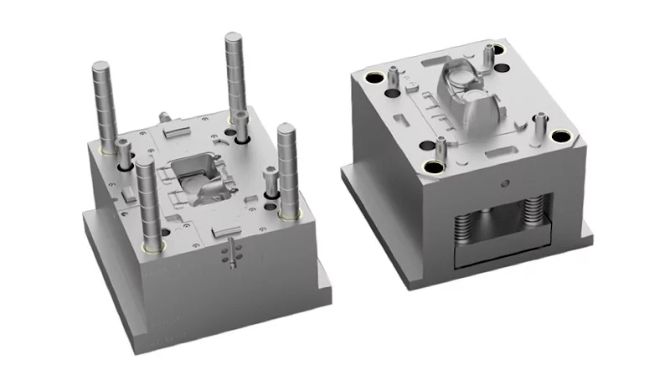
Rapid Injection Molding is an efficient, fast manufacturing method for making injection molded parts using custom molds. It merges the quality of traditional injection molding with the speed of 3D printing.
With rapid injection molding, you can get high-quality parts in just 15 days. It is way faster than the 6-8 weeks of traditional techniques. This method uses aluminum molds which are faster to produce than those made of steel. It’s perfect for small production runs (usually between 50 to 10,000 parts) and prototyping.
Rapid Injection Molding vs. Traditional Injection Molding
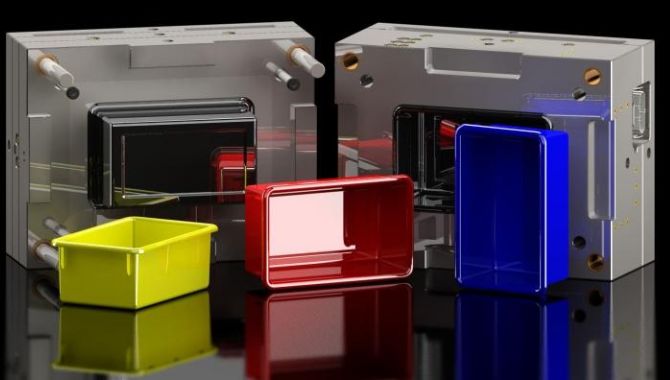
Both rapid injection molding and typical injection molding make plastic parts but they have some big differences.
Rapid molding uses aluminum molds which are quicker to produce but less sturdy. Traditional molding uses steel molds that are more durable but slower to make. Rapid molding is better for smaller batches, usually under 10,000 items. On the other hand, traditional molding excels at high-volume commonly over 100,000 items.
Let’s compare these two processes more closely:
| Feature | Rapid Injection Molding | Traditional Injection Molding |
| Mold Material | Aluminum | Steel |
| Mold Production Time | 2-4 weeks | 6-12 weeks |
| Mold Lifespan | Up to 10,000 parts | 1,000,000+ parts |
| Production Volume | Low to medium (50-10,000 parts) | High (100,000+ parts) |
| Part Complexity | Medium | High |
| Material Options | Limited | Extensive |
| Cost for Low Volumes | Lower | Higher |
| Cost for High Volumes | Higher | Lower |
| Lead Time | Shorter (days to weeks) | Longer (weeks to months) |
| Design Flexibility | Higher | Lower |
| Surface Finish | Good | Excellent |
Rapid Injection Molding Process
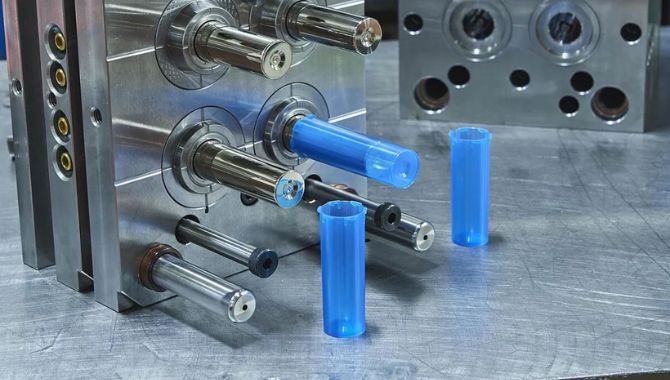
The rapid injection molding process have speed and accuracy to make high-quality plastic parts. This process has several important steps that are vital for best outcomes. Let’s look at these steps, starting with the base of any good molding project: CAD design and prototyping.
CAD Design and Prototyping
The rapid injection molding process starts with Computer-Aided Design (CAD). You make a 3D digital model of the part using specialized software like AutoCAD or SolidWorks. This 3D print is the plan for the whole manufacturing process. Advanced CAD tools allow precise changes in design which can reduce about 30% of errors when compared to old methods. Once the design is finished, rapid prototype techniques like 3D printing can create a physical prototype in 24-48 hours for first testing and validation.
Rapid Tooling
Rapid tooling is an important step in rapid injection molding. In this step, 3D printers or advanced CNC machines are used to swiftly make mold cavities. Modern CNC machines can reach tolerances of ±0.0025mm which guarantees high accuracy in your molds.
Aluminum is frequently the go-to material for rapid tooling since it machines easily and has great thermal conductivity (205 W/m·K). For more tricky geometries, you may use Direct Metal Laser Sintering (DMLS) to make complex mold inserts. DMLS can manufacture parts with layer thicknesses as small as 20 microns. It allows you to make conformal cooling channels that can cut cycle times by up to 40%.
Material Selection
Picking suitable material is very important for successful rapid injection molding. For material choice, many thermoplastic options exist including polypropylene, ABS, nylon. Each plastic material provides distinct properties for different uses. For example, glass-filled nylon has great strength and resists heat, with tensile strength up to 200 MPa and heat deflection temperatures of 200°C.
When deciding, look at factors such chemical immunity, mechanical abilities and cost. Simulation programs like Moldex3D or Moldflow and Advanced material databases can predict behavior under many molding situations before picking a specific material. These tools analyze possible defects, cooling rates, flow patterns. This allows assessing materials without committing to a specific one.
Injection Molding Process
In rapid injection molding, special machines inject molten plastic into the mold cavity. First, plastic pellets are heated to 200-300°C to melt them. Then the liquid plastic gets injected into the mold under high 10,000-30,000 psi pressure. This high force makes sure the material fills all areas of the mold cavity fully. The injection time itself is very quick – usually less than 1 second for small parts.
New machines have exact control over injection pressure, speed and temperature. This allows optimizing the process for varying plastic materials and part shapes.
Cooling and Ejection
After injection step comes the cooling phase. In this step, the mold temperature is kept under the plastic’s solidification point, usually 20°C to 120°C. Cooling times vary but small parts typically need 10 to 90 seconds. Here, the plastic hardens and takes the mold cavity’s shape. Once cooled off, the mold opens and ejector pins push out the part.
Advanced molds may use conformal cooling channels that can cut cooling times. Some rapid injection systems use automated part removal too, which help increase efficiency and decrease cycle times.
Post Processing
After ejection from the mold, your parts may need extra finishing. Usual post-processing methods are surface texturing, trimming and painting.
For accurate trimming, CNC machining can achieve very tight tolerances of ±0.001 inches. To smooth surfaces, techniques like vapor smoothing can reduce roughness to 0.1 μm Ra. Some parts require adding metal inserts or assembly. In high-volume scenarios, automated systems can handle these tasks. These can process up to 1000 parts per hour.
Iteration
Rapid injection molding is great to iterate designs quickly. You can do mold tweaks in as little as 24 hours which enable rapid design upgrades. This iterative process usually needs 3-5 cycles before finalizing the design. Each round addresses issues like sink marks, flow lines or warpage.
Modern simulation software can predict upcoming problems which help reduce physical iterations required. This fast feedback loop can reduce development time from months to weeks.
Standards and Quality Control
Keeping good quality control is vital in rapid injection molding. For this, use statistical process control (SPC) to track important measures like mold temperature and injection pressure.
You also need to utilize accurate measurement tools like coordinate measuring machines (CMMs) that can check tiny 0.001 mm features. Do regular mold maintenance, usually every 10,000 to 100,000 shots, to guarantee same part quality. Also, implement an initial article check process to validate new molds and material batches.
Top 7 Benefits and 3 Challenges of Rapid Injection Molding
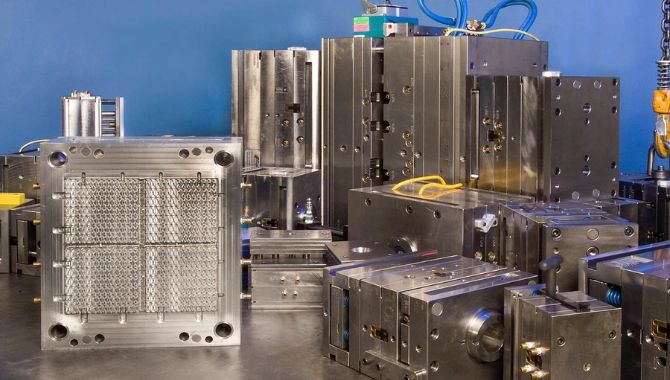
Rapid injection molding has distinct pros and cons to consider. Knowing these can help you decide if it meets the requirements of your project or not. Let’s take a look at the benefits of rapid molding first.
Advantages:
- Faster Time-to-Market
Rapid injection molding greatly shortens your product development cycle. You can go from concept to functional parts in just 10-15 days, versus the typical 6-8 weeks with traditional methods.
- Cost-Effective for Low Volumes
The aluminum molds used in rapid injection molding cost 40-60% less than steel molds that are used in traditional molding. This makes it a cost-effective choice for prototypes and short runs by letting you test market demand without big upfront investment.
- Design Flexibility
The process allows quick and affordable design changes. It means you can refine your product through many iterations. This flexibility is important for optimizing designs before full-scale production.
- High-Quality Prototypes
Despite being speedy, rapid injection molding doesn’t compromise on quality. It gives parts with tight tolerances (usually as precise as ±0.005 inches.) and great surface finish.
- Bridge to Full Production
Rapid injection molding is a great bridge between prototyping and full production. It lets you make small batches of production-quality parts for market testing or filling initial orders while preparing for mass output.
- Material Compatibility
The process works with most materials used in traditional injection molding. These include common plastics like polycarbonate and ABS plus specialized medical-grade polymers.
- Reduced Tooling Wear
The aluminum molds that are used in rapid injection molding have less wear than steel molds used in traditional injection molding.
Disadvantages:
- Limited Production Volume
While perfect for low to medium volumes, rapid injection molding becomes less cost-effective as quantities rise. The break-even point is usually 10,000-15,000 units.
- Limitations of Mold Materials
The aluminum molds used in rapid injection, while ok for many uses, may not work in all cases. They might not handle the high pressures needed for some complex parts or filled materials. This could limit material or design choices.
- Higher Per Unit Costs at Large Volumes
For high-volume production runs, the per-unit cost of parts made through rapid injection molding can be higher than those from old traditional injection molding. You’ll need to carefully weigh your long-term manufacturing plan and your production volume when picking between rapid and traditional methods.
Applications of Rapid Injection Molding
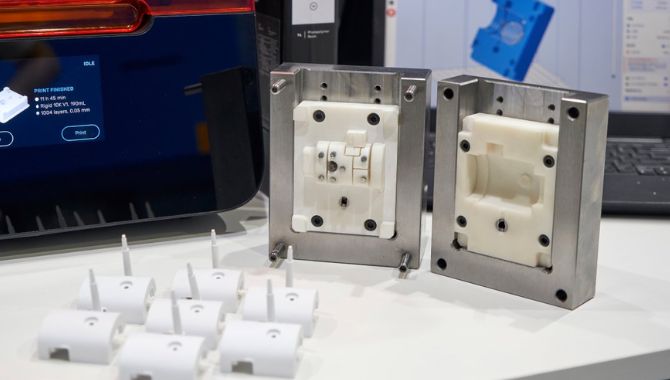
Rapid injection molding is important in many industries as it provides solutions for different manufacturing needs. Let’s examine some of its uses.
Prototyping and Design Validation
Rapid injection molding shines at creating working prototypes to validate designs. You can use it to make complex shapes with good tolerances. It allows accurate testing of fit, form and function.
For example, in auto design, rapid injection molding produces prototype dashboard parts for checking assembly and evaluating ergonomics. In aerospace, it’s used to manufacture prototype turbine blade models to analyze aerodynamics.
These prototypes closely match properties of final production parts. This helps engineers spot and fix design problems early in development.
Bridge Tooling
Bridge tooling with rapid injection molding is used to make parts during the transition from prototype to full production. This is very helpful in the medical device industry. There, it’s used in components like catheter connectors. These components are made to meet current market needs while waiting for final production tooling.
In aerospace, bridge tooling can produce small batches of intricate parts, like air duct pieces. It is to test performance in real-world conditions. Bridge tooling lets you validate design, test market reaction, and create revenue while your full production tooling gets ready.
Low-Volume Production
Rapid injection molding works great for small-batch production. It gives an affordable way to make a finite number of parts. This is mainly helpful for startups or niche markets where demand is not known.
For instance, in the car industry, rapid injection molding can produce custom interior pieces for luxury vehicles. Likewise, in aerospace it’s used to make small sets of intricate ducting components for aircraft ventilation systems.
Medical Device Manufacturing
Rapid injection molding is important in the medical device industry for making high-accuracy, complex parts. It is used for producing disposable medical items like catheter pieces and syringes. It’s also used to create customized surgical tools for particular procedures.
For example, rapid injection molding manufacture specialized orthopedic drill guides that are used in knee replacements. This guarantees precise fit and alignment for each patient.
Consumer Electronics
Rapid injection molding is really handy in the consumer electronics business where design and functionality are important. There it is used for making wearable device housings and smartphone cases. The process lets manufacturers include tricky features like port openings and button placements with high accuracy.
Rapid injection molding supports the quick development cycles that are common in electronics. This makes sure new products appear on store shelves fast.
Top 3 Challenges and their Solutions in Rapid Injection Molding
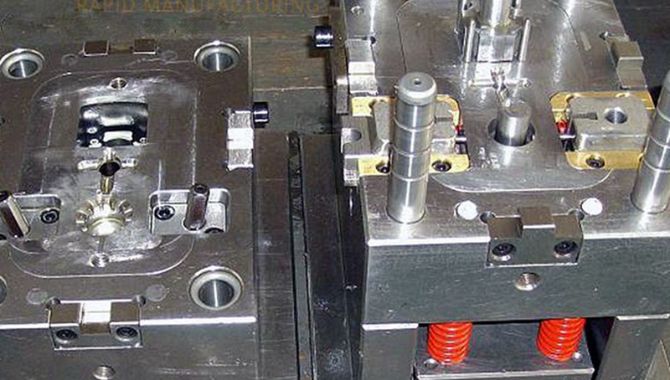
Rapid injection molding can present some difficulties. These challenges need strategic solutions to guarantee best performance. One key issue is material and mold constraints which we will discuss first.
Material and Mold Limitations
Choosing suitable materials is important, as not all materials work with rapid injection molding. To address this, consult experienced rapid injection molding service providers. They can guide material selection that gives needed properties for your use while being compatible with the rapid tooling process. Also, using advanced mold designs, like optimized gate locations and uniform wall thickness can reduce issues with mold constraints.
Design Constraints
Rapid injection molding can struggle with tricky geometries. You may see problems like warping or sink marks because of uneven wall thicknesses. To fix this, focus on designing parts with smooth transitions and uniform wall thickness and. Use CAE software for mold flow review to improve part design and cut potential flaws. When complex features are unavoidable, think about using removable inserts in the mold design.
Cost Implications
While rapid injection molding is cheaper for low to medium volumes, it can get pricey for big production runs. To reduce costs, closely analyze your production needs and consider hybrid approaches. For example, use rapid injection molding for initial production and switch to traditional molding for higher volumes. Also, check out multi-cavity molds to cut per-part costs and better production efficiency for medium-volume runs.
Conclusion

Rapid injection molding is great for affordable, fast manufacturing of low to medium volumes. It shines in prototyping, bridge production and design validation across industries. Though it allows quick turnaround times and design flexibility, it has limits with tricky geometries and high volumes. However, picking a dependable service provider skilled in rapid injection techniques can minimize these issues.
Ready to revolutionize your plastic parts production process? Contact KDM Fabrication today for customized rapid injection molding services.
FAQs
What’s the difference between rapid injection molding and rapid prototyping?
Rapid injection molding makes functional parts using aluminum molds and standard plastics, while rapid prototyping creates visual prototypes using CNC machining or 3D printing.
Are the parts made by rapid injection molding durable?
Yes, parts made by rapid injection molding are durable. They usually have properties similar to those parts made with traditional injection molding. They can withstand functional testing and real-world use.
How to pick the best materials for rapid injection molding?
To choose the most suitable material for your application
- Consider factors like parts mechanical properties, functionality, cost and chemical resistance.
- Consult an experienced rapid injection molding professional.




